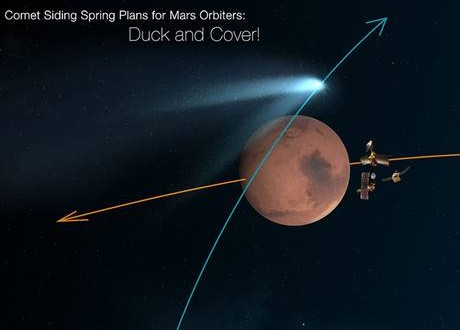The heavens are hosting an event this weekend that occurs once in a million years or so.
A comet as hefty as a small mountain will pass mind-bogglingly close to Mars on Sunday, approaching within 87,000 miles at a speed of 126,000 mph.
Nasa is now taking steps to protect its Mars Reconnaissance Orbiter, Mars Odyssey and MAVEN orbiters from any comet dust produced by the close fly-by, as well as preserving any opportunities to gather valuable data from the event.
The organisation says Comet Ison in October 2013 gave teams on Mars observatories a good chance to practice looking at an object hurtling past the planet.
The best viewing on Earth, with binoculars or a telescope, will be from the Southern Hemisphere.
For anyone who doesn’t own a pair of binoculars or live in the Southern Hemisphere, the Slooh Community Observatory will broadcast the comet passing Mars here.
The Virtual Telescope Project is also hosting a webcast at 17.45 BST, which you can watch here.
David Humm, of the Johns Hopkins University Applied Physics Laboratory described the event as “unique, unexpected, and lucky for us”.
Agencies/Canadajournal
 Canada Journal – News of the World Articles and videos to bring you the biggest Canadian news stories from across the country every day
Canada Journal – News of the World Articles and videos to bring you the biggest Canadian news stories from across the country every day



